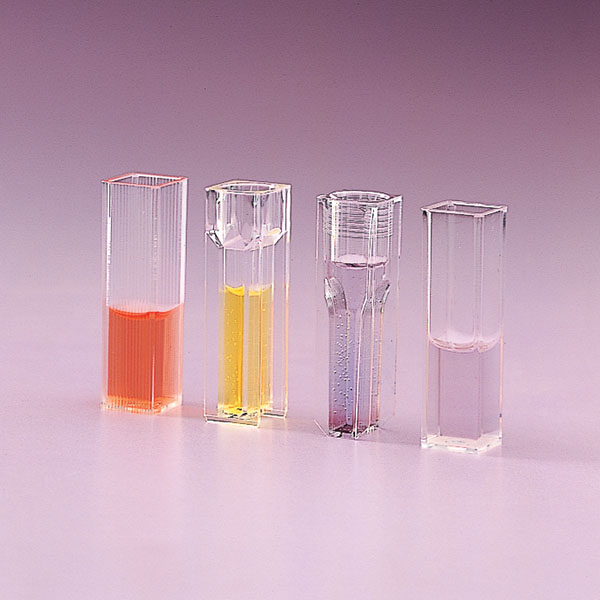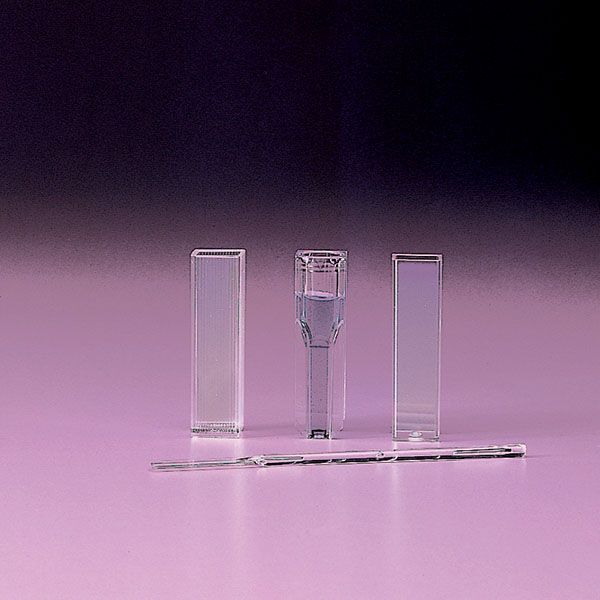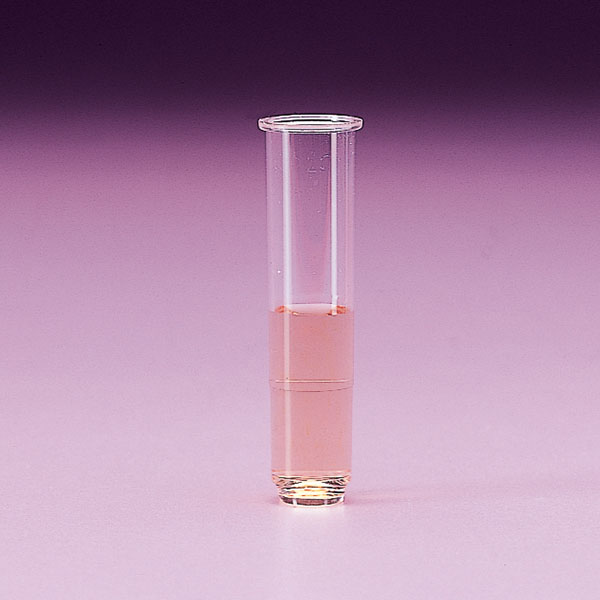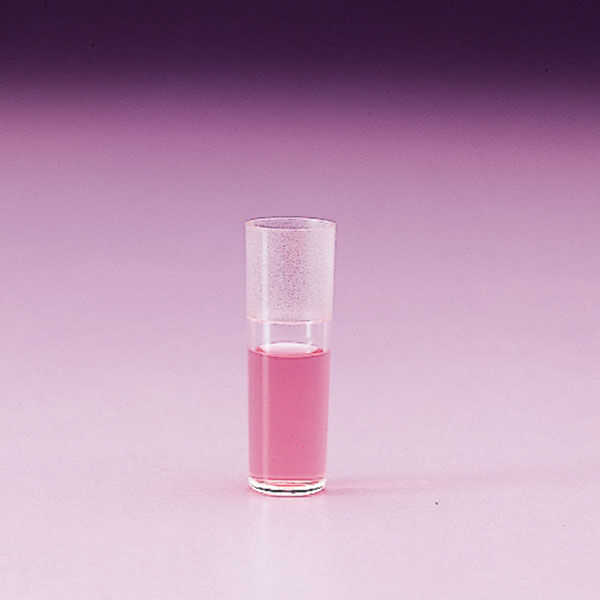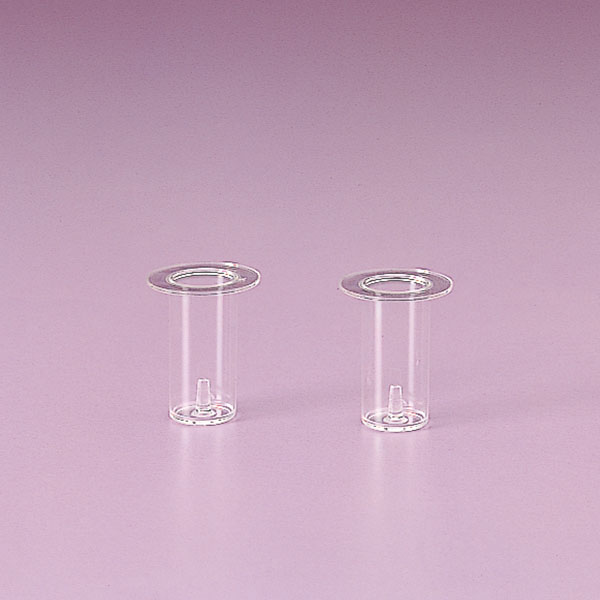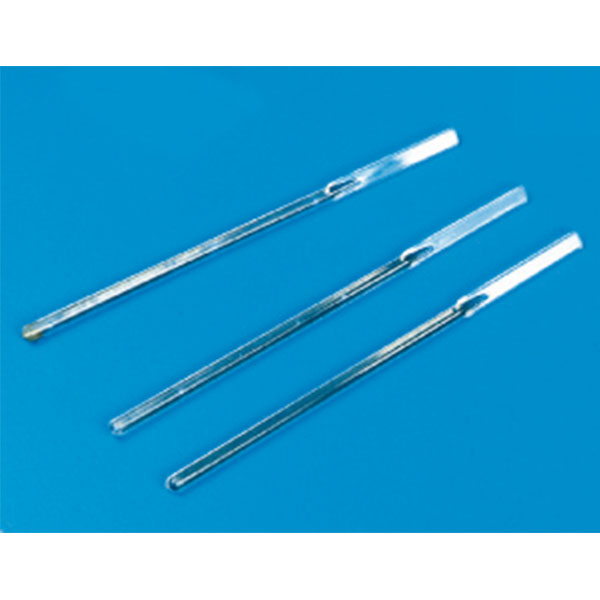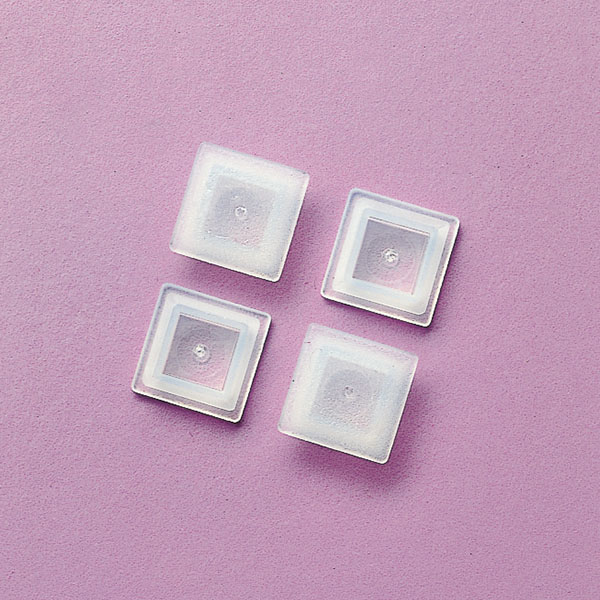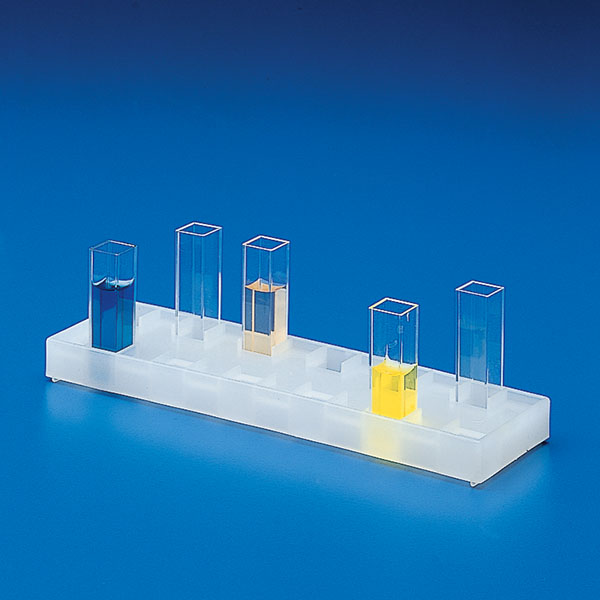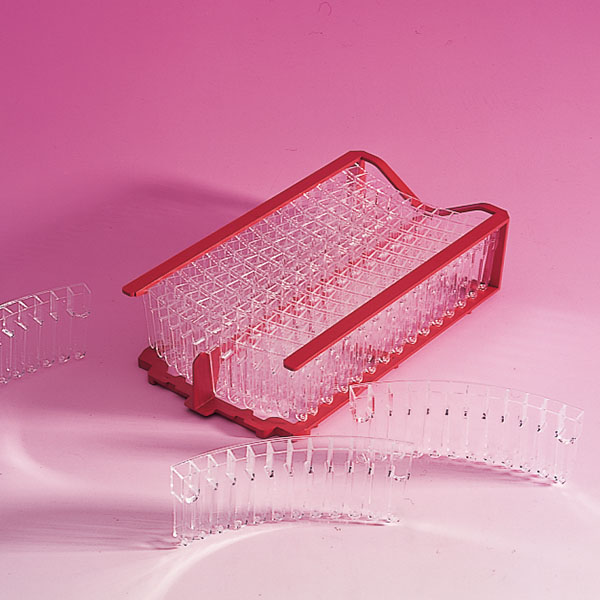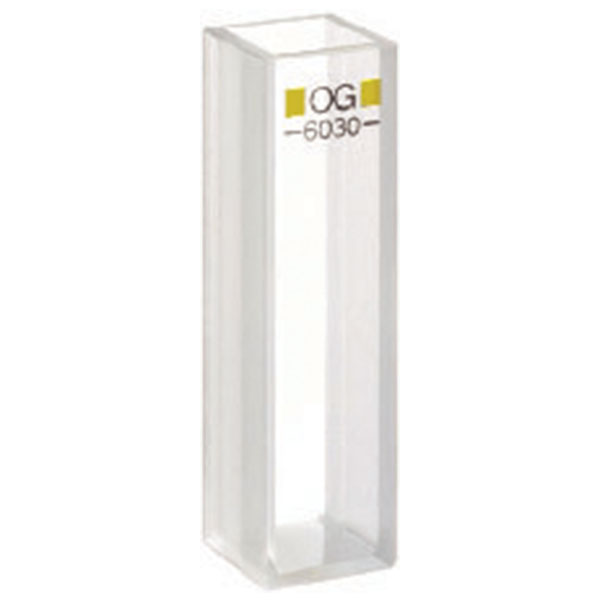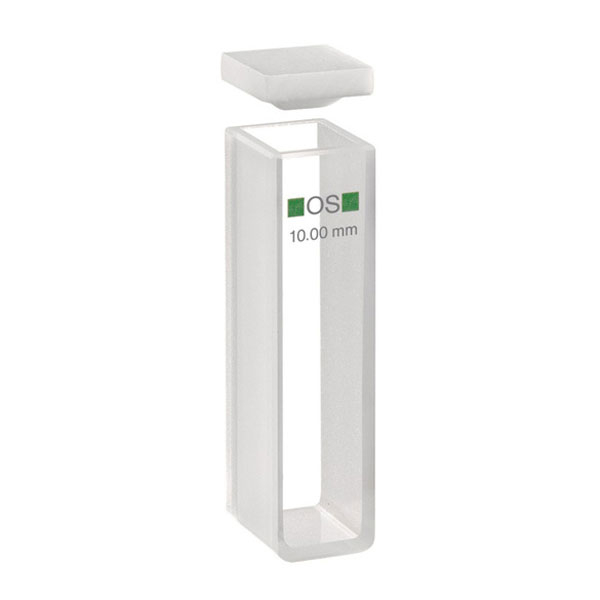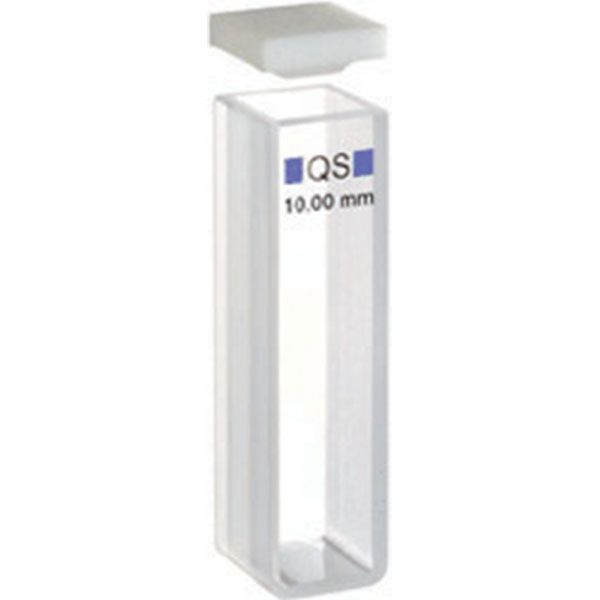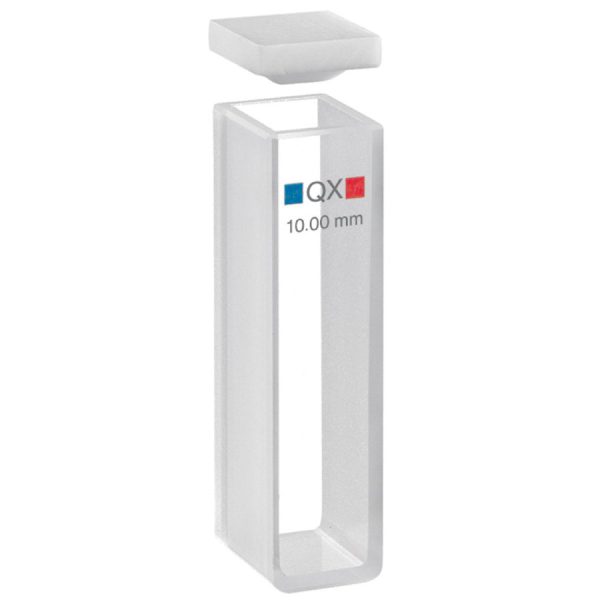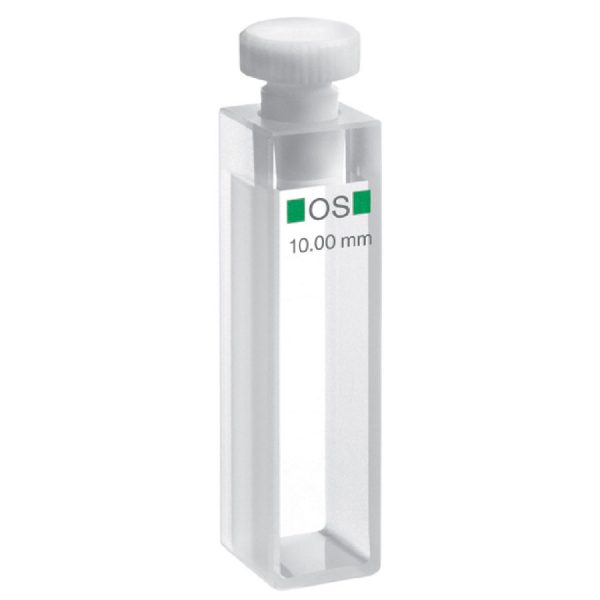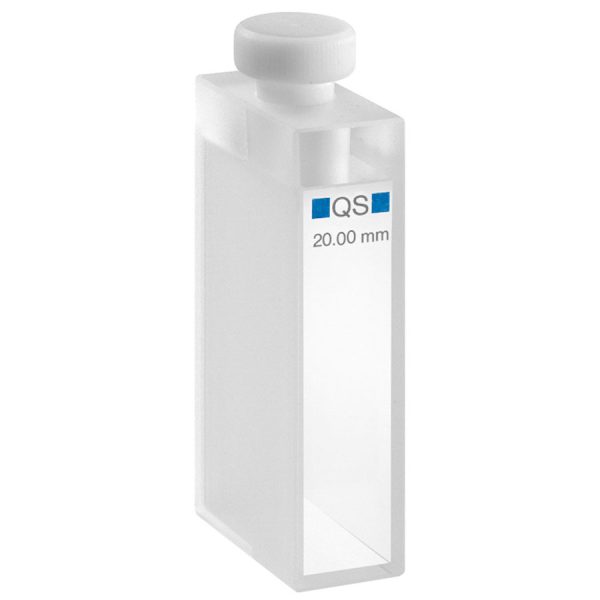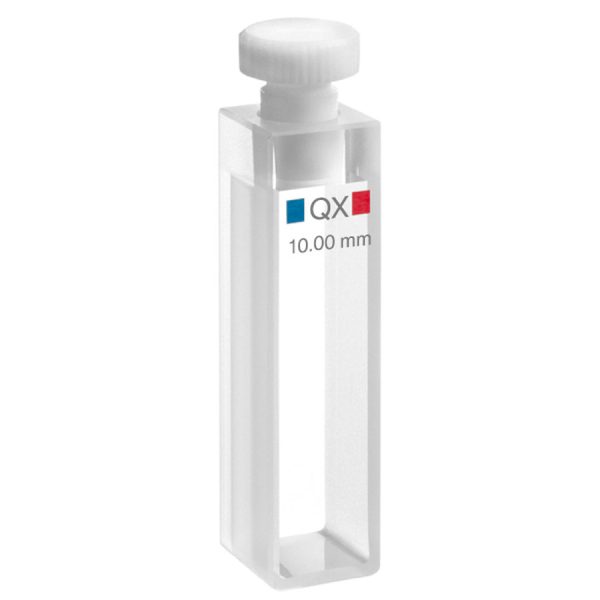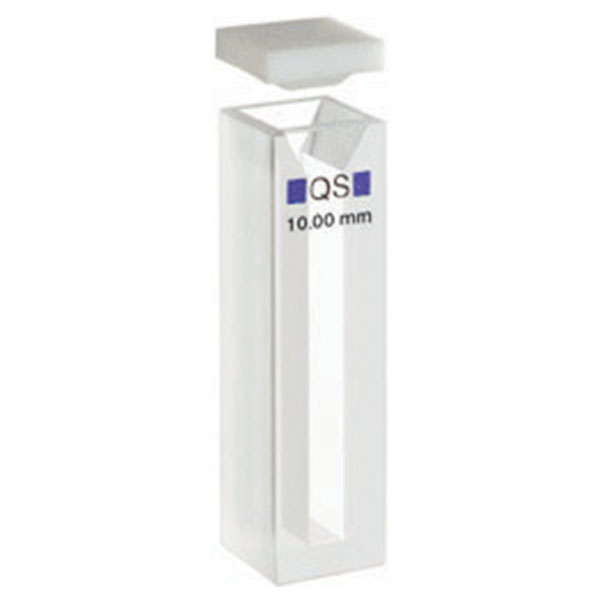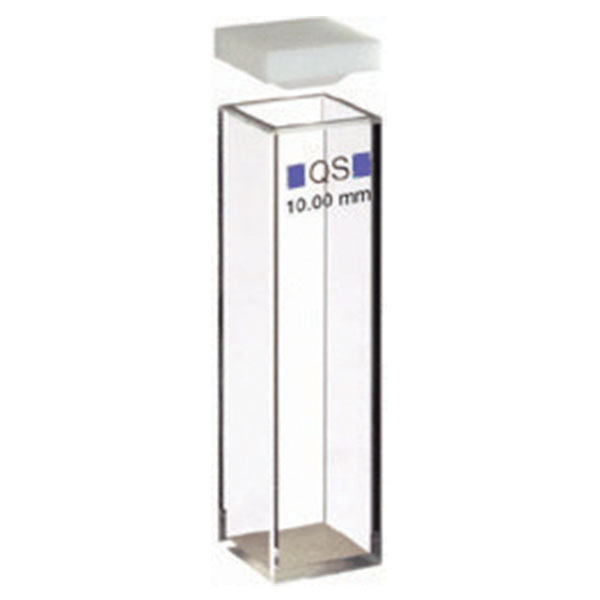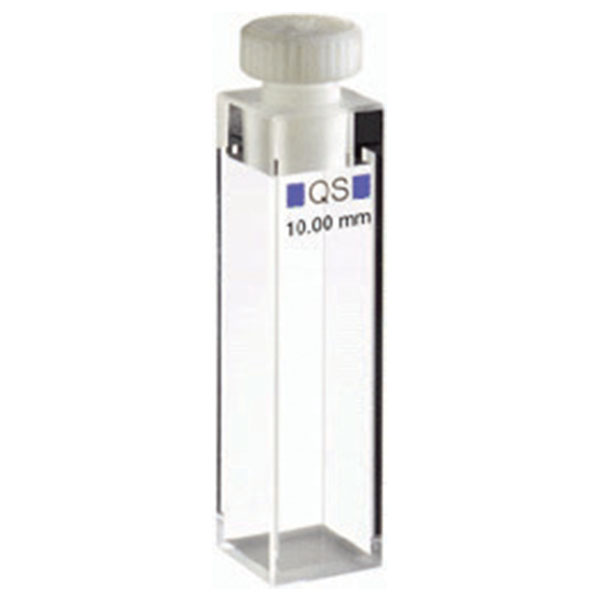Cuvettes are a laboratory instrument used as a sample container for spectrophotometric experiments. They are generally made in small sizes and in different materials, depending on their use.
Size and shape of cuvettes
Cuvettes are characterised by a prismatic, rectangular or square shape and a flat, closed bottom. The top section is open, and the sample is inserted into it. However, there are also alternative models with a lid or screw cap.
Generally, cuvettes measure 10 mm at the base, to facilitate the calculation of absorption coefficients. As far as their capacity is concerned, the smallest ones can hold 70µl, medium sized ones between 1.5 ml and 3.0 ml, and larger ones from 2.5 ml onwards.
Materials
They are available in a variety of sizes.
Materials
Cuvettes are made of different materials. The most common are quartz, plastic and glass. The choice of equipment material is decided according to the wavelength range in which the analysis is conducted and the nature of the sample being analysed.
- Optical glass. It has an optical wavelength range of 340-2,500 nm.
.
- Optical wavelength range of 380-780 nm.
- Fourth fuse. Minor optical wavelength range below 380 nm. Fused quartz is used where the wavelength is in the ultraviolet.
- Violet quartz.
- UV quartz. Optical wavelength range of 190-2,500 nm.
.
It is important to emphasise that the choice of material must also take an additional factor into account. During sample analysis, a light beam passes through the cuvette. The wall through which the beam passes must be made of a material that completely retains its transparency during this process, in order to avoid a decrease in the accuracy of the analysis.
Typologies
In some processes, the cuvettes are optically processed on only two opposite sides, since only one light beam passes through them. In this case, the sides that are not processed may be opaque or rough for better handling. In contrast, cuvettes that are used in spectrofluorometers are optically processed on all four sides as the light is reworked in a direction perpendicular to the light beam.
Accessories
The use of cuvettes is accompanied by certain accessories. For example, cuvette spatulas consist of short rods for stirring the sample. These are usually made of polystyrene.
An additional accessory that facilitates the use of this equipment is the polyethylene cuvette holder. As the name suggests, this has the task of containing and holding the cuvettes in an upright position for preparation work, and in a horizontal position for storage and protection. The cells of the cuvette holders have a standard cuvette size of 12x10 mm.
.



